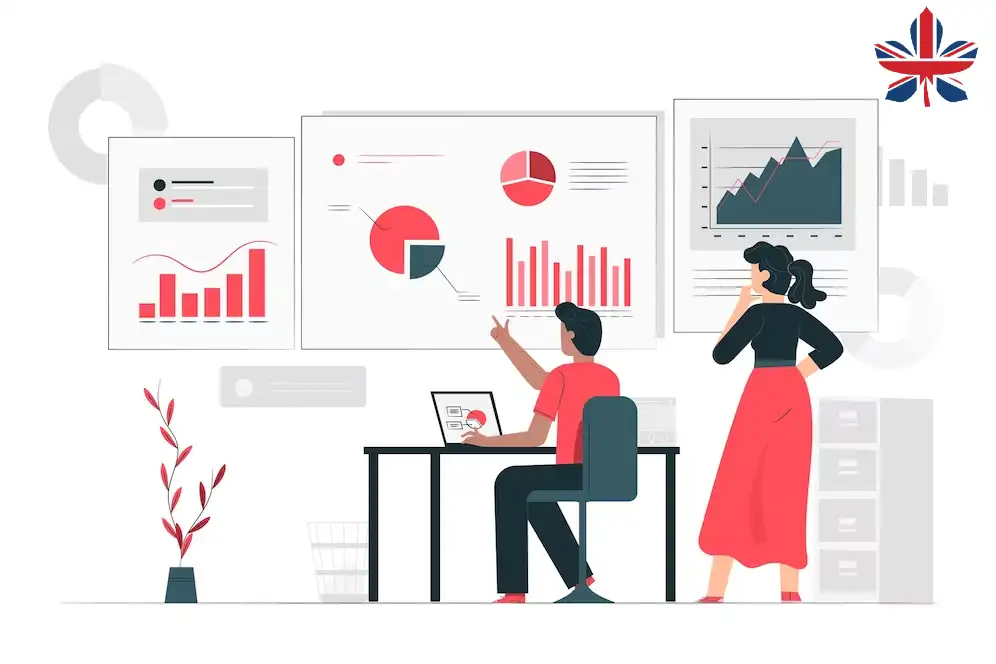In the vast landscape of academic research, the process of navigating intricate data can often feel like venturing into uncharted territories. You will encounter a plethora of sophisticated facts when pursuing a master’s degree, particularly in a field as diverse as health and safety or nursing, which necessitates careful study. Enter the realm of data visualization, a potent tool that holds the key to unravelling, interpreting, and presenting intricate information. We will discuss all the important aspects of the use of data visualization in academic writing and research.
Getting to Know Data Visualisation:
Data visualisation is the art of converting numerical information into graphic forms like graphs, charts, and infographics. It’s akin to weaving a story from raw data, unravelling insights, patterns, and relationships that might otherwise remain hidden. For students embarking on the journey of advanced research, especially in domains like Health and Safety or Nursing, data visualization serves as a powerful bridge for effectively conveying findings.
Why Data Visualization Holds Weight:
Simplicity Amid Complexity: As you tread along the master’s dissertation path, the data you grapple with can often be intricate and overwhelming. Data visualization simplifies intricate concepts, rendering them comprehensible to various audiences, ranging from peers and professors to professionals in your chosen field.
Avenue for Effective Communication: The task of presenting research findings to diverse stakeholders can be daunting. Data visualizations infuse life into your findings, making them more engaging and facilitating effective communication of insights.
Unearthing Patterns: Health and Safety dissertation topics frequently necessitate discerning trends and patterns that can pave the way for improved practices. Visualizations offer a lucid platform for spotting these trends, fostering informed decision-making.
Comparative Revelations: When dealing with Nursing assignment help, visualizations enable seamless comparisons between distinct treatment methods or patient outcomes. This aids in drawing meaningful conclusions from intricate data arrays.
Unveiling Hidden Treasures: Data visualization tools unravel concealed insights that might evade notice in conventional data formats. Through graphs and charts, you can unveil correlations and outliers that can steer the course of your research.
Applications in Health and Safety Dissertation Topics:
Dissecting Incidents: Visualizing workplace incidents and accidents aids in pinpointing areas susceptible to safety risks, thereby facilitating efficacious proposals for preventive measures.
Illuminating Safety Compliance: Visual representations can effectively showcase adherence to safety regulations, spotlighting data related to training completion, equipment checks, and more.
Epidemiological revelations: Data visualisations can reveal illness frequency, distribution, and risk factors in the context of public health research, laying the groundwork for effective interventions.
Unmasking Hazards: Within the gamut of Health and Safety research, identifying potential hazards in various environments becomes more attainable through visual representations.
Relevance in Nursing Assignment Help:
Shining Light on Patient Outcomes: Visualizing patient data allows nurses to grasp treatment effectiveness, recovery rates, and the influence of diverse interventions.
Illuminating Care Plans: Nursing assignment help often entails intricate care plans. Visual representations render these plans more comprehensible and executable, ensuring the delivery of superior patient care.
Mastering Medication Management: Nurses can visualize medication schedules, dosages, and potential interactions, resulting in precise administration and heightened patient safety.
Enlightening Patient Education: Infographics and diagrams simplify intricate medical information, enabling nurses to educate patients with greater efficacy.
Crafting Stellar Data Visualizations:
The Art of Selection: opt for the visualization format that best suits your data, whether it’s bar charts, line graphs, pie charts, or heatmaps.
Prioritize Transparency: Keep your visualizations devoid of unnecessary clutter, focusing on clarity to convey information effectively.
Names and Numbers: Ensure that axes, data points, and components of your visualization are aptly labelled while providing a succinct title for context.
Uniformity Rules: Maintain consistent colours, fonts, and scales across your visualizations, ensuring a polished and uniform appearance.
Enabling Accessibility: Foster inclusivity by incorporating alt text and utilizing colour combinations that cater to individuals with varying abilities.
In Summation:
Data visualization is more than just a superficial enhancement to your research; it’s an influential instrument that elevates the impact and accessibility of your discoveries. As you navigate through master’s dissertation help, immerse yourself in the exploration of Health and Safety dissertation topics, or engage with the realm of Nursing assignment help, data visualization emerges as a bridge that bridges the gap between intricate data and your audience. Accept the world of visual representation and watch as your research is transformed into an engaging story that helps readers make well-informed decisions and significantly advances knowledge in the topic you have selected.



















